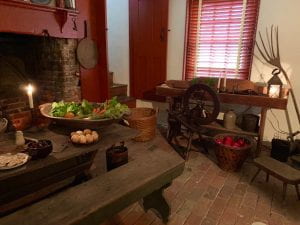This week was our last time working on the Coleman Farm. But before we headed to the field we presented our findings at the Coleman Farm. We spent the whole week meeting for this day preparing and discussing with each other how and what we were going say. Even after spending all that time preparing we were still somewhat nervous. The first challenge was making sure we got to Odessa on time, today was not a day we could afford to be late. So with my stead fast driving we were able to make it promptly on time at 9am.
Once we arrived we took the time to rehearse the presentation one more time to make sure everything would flow smoothly. The guests began to arrive and Professor De Cunzo led us off with introductions and speaking about our experience. Then Claire started off the presentation talking about the history of archaeology along the Appoquinimink and within the region. Michelle showed our sampling methods and how we surveyed the area. I discussed our findings on the Coleman Farm such as ceramics, nails, and different forms of redware just to name a few things. Matt used images to show the density of our metal detection hits , surface collection, and nails found. Alexandra and Dan discussed what comes next after our work is done and how we can work with the community in the future. Finally Molly closed our presentation with a discussion period to take suggestions from the audience what they think should be done in the future and how we can work together again with the Odessa community. We’re all encouraged from what we heard.


After finishing our presentation we had snacks and cake while chatting with everyone in the lobby of the Odessa Bank. We were happy the presentation went well and all our preparation paid off. Then we changed clothes and headed to the field one last time. At the field Matt, Molly, and Alexandra continue to excavate a larger unit at the south end of the site (photo below). Claire, Michelle and I closed out our excavation unit and helped clean up. We left one excavation unit on the hill open for Professor De Cunzo and some of the volunteers to come back and look at. Lastly we all gathered up for one last group photo to commemorate our time here at the Coleman Farm.

Jay Arnold













